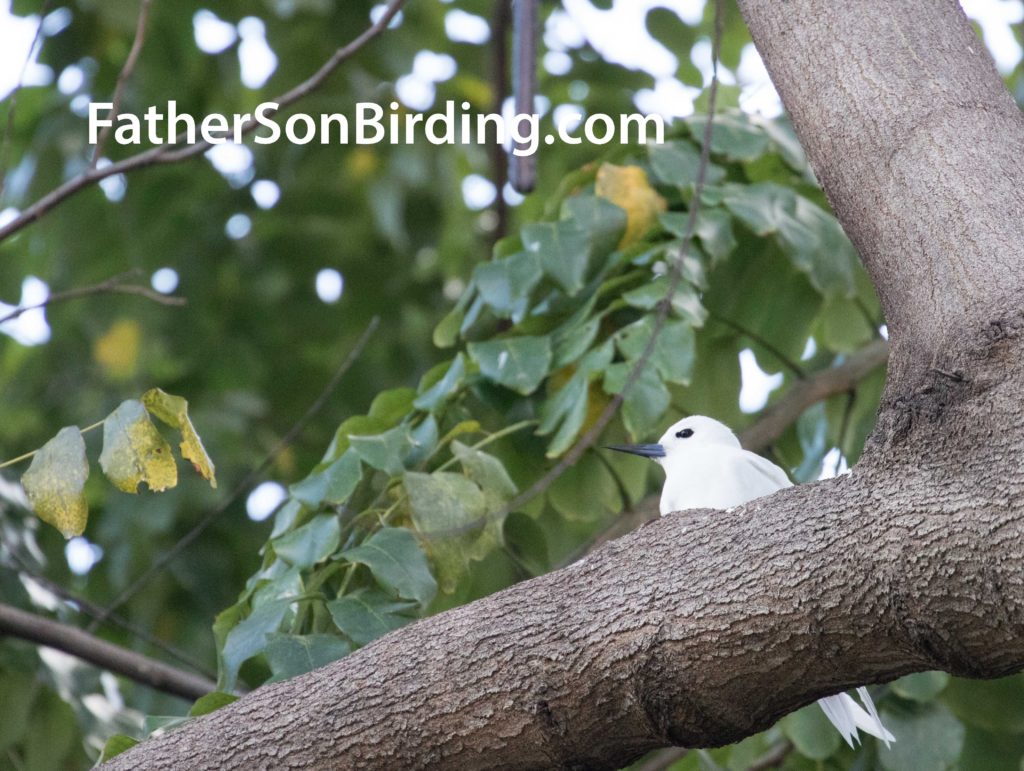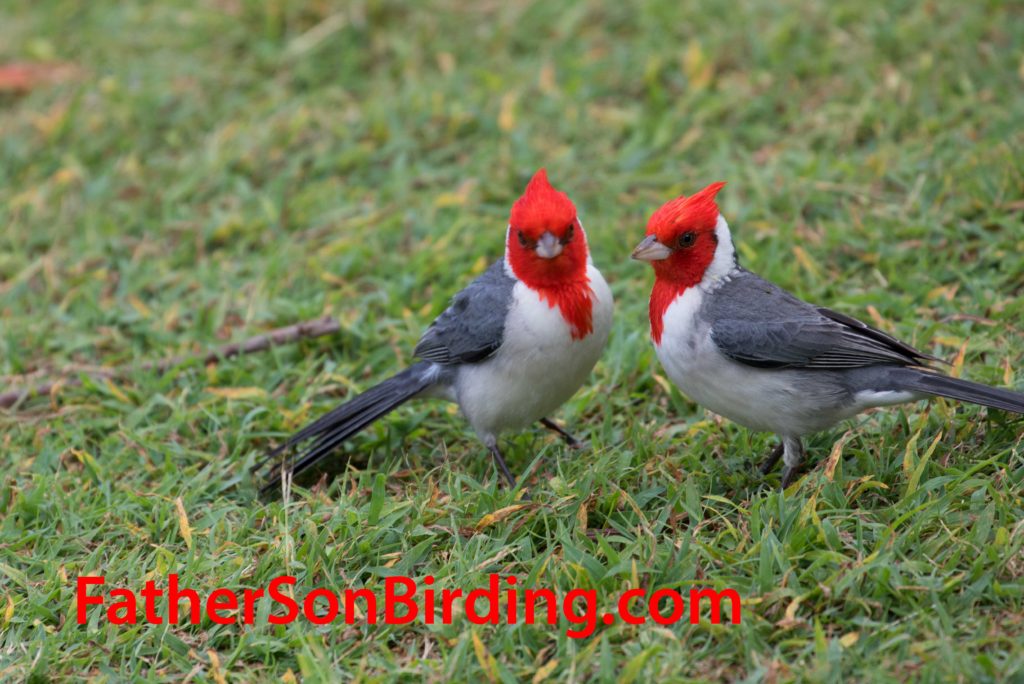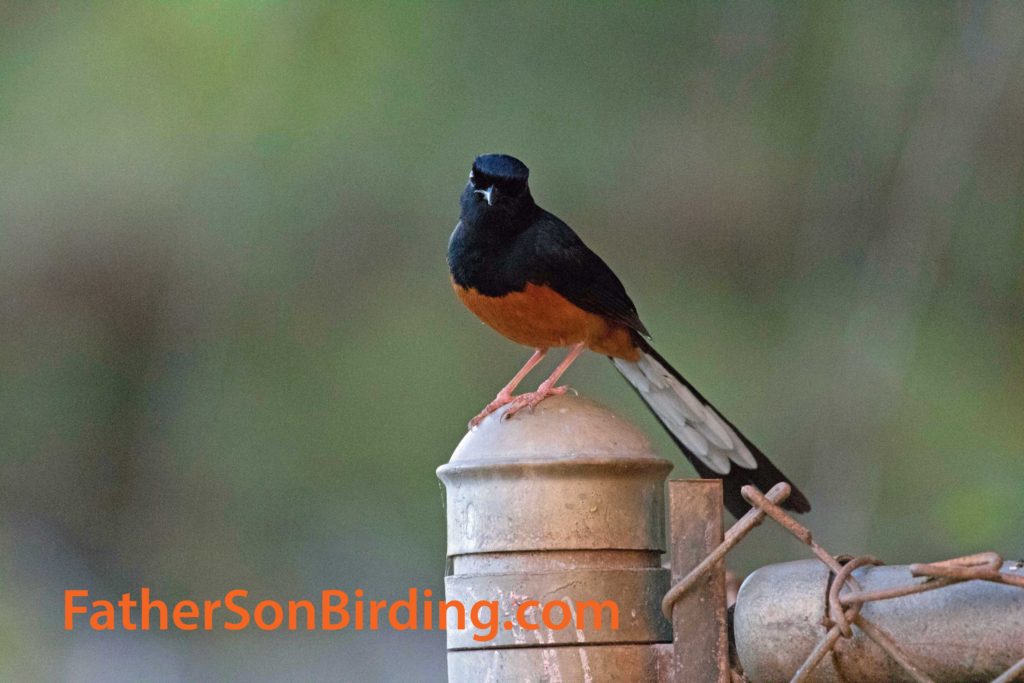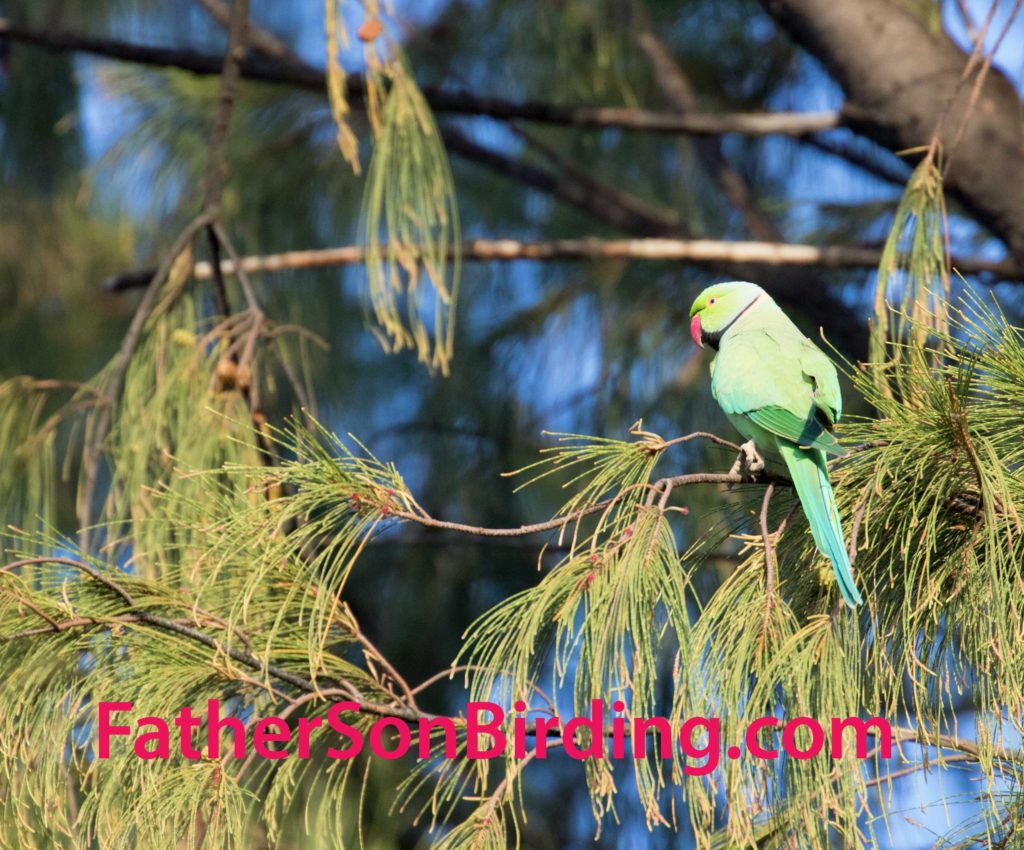If you haven’t done so already, please subscribe to our birdy blog by filling out your name and email in the form down in the right-hand column. We will not share your information with anyone. Thank you! Sneed & Braden
During Spring Break this year the Hellgate High School Band travelled to Oahu, Hawai’i for the Pacific Basin Music Festival. Almost every day my friends and I worked with music professors, performed, and enjoyed music in many different forms. The festival provided us with experiences we’d never forget. However, we did not spend every second playing—we actually had quite a bit of free time. During this time, we hiked, surfed, snorkeled and shopped around Honolulu, giving me time to take in the island and its birdlife.

Only about 6 of the birds I spotted on the trip were actually native to the island chain (Brown Booby, Hawai’ian Coot, White Tern, Pacific Golden-Plover, Oahu Amakihi and Wandering Tattler), which opened my eyes to the exotics of the tropics. The city of Honolulu itself was an international jungle, full of plants and birds from all over the globe. A few native Hawai’ian birds had taken to the civilized landscape; wintering Pacific Golden-Plovers lounged on lawns, suited in their dappled patterns, and ghostly White Terns floated between skyscrapers. The majority of the birds, though, hailed from other continents. Familiar birds included Rock Pigeons and House Sparrows (Europe), and House Finches and Northern Cardinals (North America). Lawns yielded a high diversity of species, including Common Mynas, Red-vented Bulbuls, Chestnut Muñias, Zebra and Spotted Doves, and Java Sparrows (Asia) and Cattle Egrets, Common Waxbills, African Silverbills and Yellow-fronted Canaries (Africa). Red-crested Cardinals (South America), which are brilliant gray birds topped with crimson crests, sang from palm trees.

One morning, when hiking through densely rain-forested canyons, I encountered a plethora of different species. I did manage to hear one native, the Oahu Amakihi, but the forest echoed with mostly non-natives’ songs, like in the city. White-rumped Shamas (Asia) belted out complex, froglike songs, and Red-billed Leiothrixes, Japanese White-eyes and Red-whiskered Bulbuls (Asia) lurked high in the damp canopies. Red Junglefowl (Asia), the ancestors of domesticated chickens, as well as actual domesticated chickens, ruled the streets. By the end of the trip I had reached my goal of 30 species, even if one of them was an unidentifiable white booby (I’m guessing a Red-footed) dodging the waves off of North Shore.

We ran into large numbers of Rose-ringed Parakeets (Asia and Africa) on several occasions, and I glimpsed a pair of Red-masked Parakeets (South America) shooting past the scrubby slopes of Diamond Head volcano in southeastern Honolulu.

This raised controversial questions. Most of these species definitely did not belong here, that much was true. But now, thanks to human involvement, they had established and thrived, and many of them caused no obvious harm to the native birds. So, what should we do with them? Should we eradicate them, killing innocent birds because of a crime humanity committed? Or should we allow them to stay, letting these foreign species form their own niches in Hawai’i and other places?
In the case of many of the birds, it is too late. For better or for worse, they will be here forever, and I think that if they are not harming indigenous birds, we should let them be, and let nature decide what to do with them. Introduced predators such as cats, rats, and mongooses, however, are another matter and take a terrible toll on all of the islands’ birdlife. More resources should definitely be allocated to eliminating these destructive invasive pests.


Braden, you’ve certainly made the most of your considerable travel opportunities, sounds like! And it looks like you’re going to try your hand at being a public speaker next? Rock and roll!
Yes, and I will have to see how that goes! Thank you!
Great post, Braden! Full of interesting info, and some nice photos. Jeez, why didn’t I think of joining a band in high school so I could hang out in Hawaii? Kids are smarter these days, it seems.
However, as an ailurophile I must rise, Your Honor, to object to your demonization of cats. If the occasional petrel snack is the price we humans must pay to keep elegant felines among us, what’s the harm? There are something like 10,000 bird species in the world, but only 36 feline species. Do the math. I rest my case, Your Honor, and trust that you will maintain impartiality in this proceeding, and future ones.
Alas, Kind Sir, the subject of cats—and we’re only talking about domestic cats here—can be full of claws. We have no objection to indoor cats and appreciate their beauty, playfulness, and intelligence. However, the toll outdoor and feral cats take on wildlife is truly horrendous. One study reported in the Washington Post estimates that cats kill between 1.2 and 3.7 BILLION birds each year in the United States. Cats have been implicated in the extinction of several bird species. What’s more, bells and other early warning devices attached to cats have little or no effect on kill rates. Birds just don’t get it. The bottom line: If we want our wonderful wild bird species to still be around a hundred years from now, we have to keep the kitties indoors and do our best to control and eliminate feral cat populations
I’m really enjoying following up on your adventures, Braden! I’ve always been a big fan!!
Best,
Mrs. Norton
WMS, 8th grade
Wow, thank you! That means a lot to me!